Is a £2,000 coffee machine ever worth it? Our barista put KitchenAid's model to the test
Now you get to call the shots
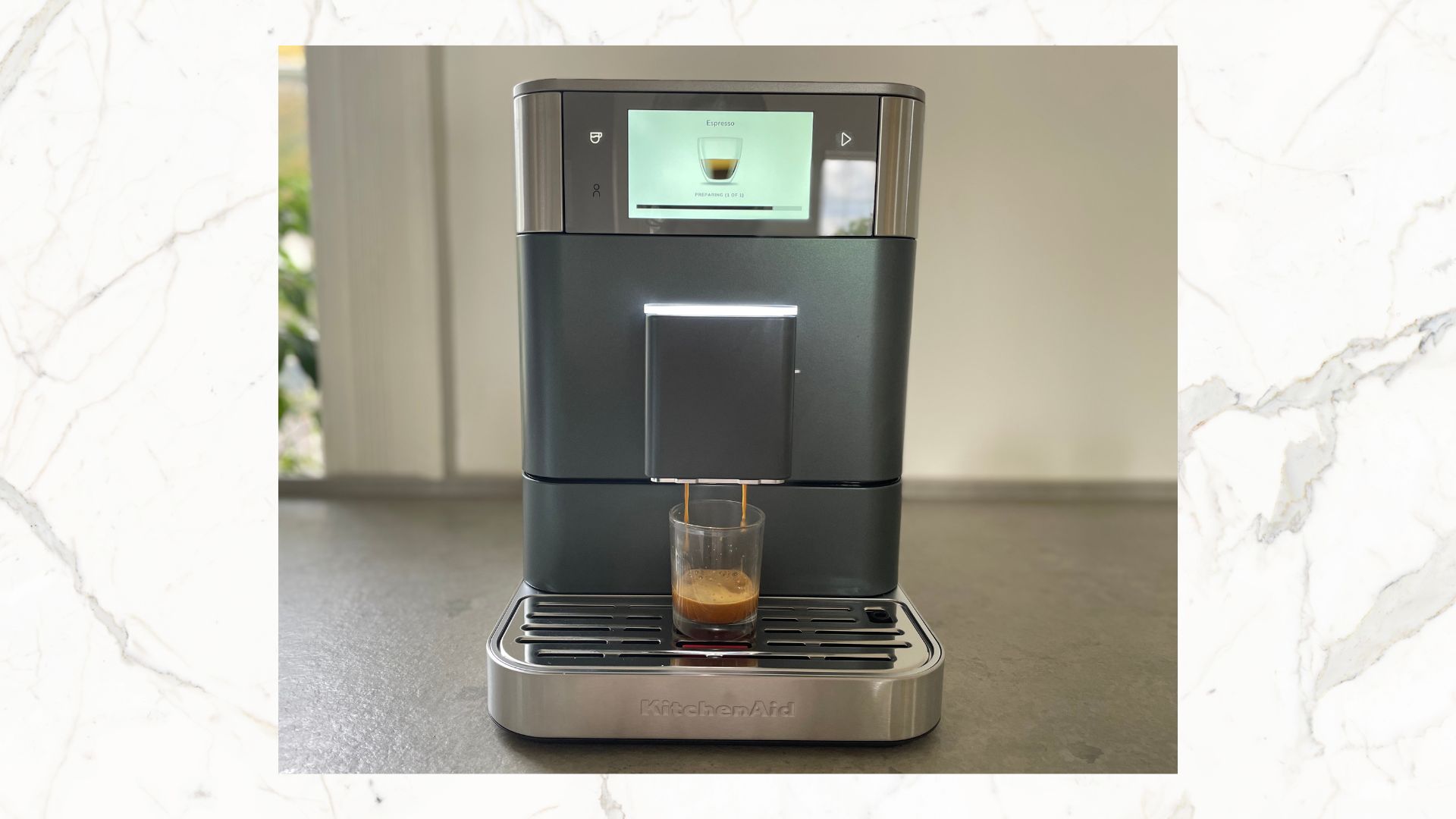
There's no escaping the toppy price tag of this machine. If you can stomach a nearly £2,000 spend, you'll get treated to the proper luxury experience. This is totally faultless on flavours, speed, extraction, and versatility. I love everything about it (except the price)
-
+
Over forty, completely customisable coffees
-
+
Steams non-dairy milks perfectly
-
+
Incredibly sensitive to changes in coffee (and requests)
-
+
Different user profile settings make it easy to get the coffee you want
-
+
Excellent at extracting flavours, even from cheap beans
-
-
Expensive, even though it's luxurious
-
-
Relatively large footprint
Why you can trust Woman & Home

KitchenAid is best known for its iconic stand mixers, but if you’ve ever looked into its coffee machines, you’ll know that they can make some seriously good stuff. Their grinder, simple espresso machine, and temperature variable kettle have held strong spots on my list of kitchen essentials — their latest automatic coffee machine might have just claimed a spot too.
The brand has just launched an automatic coffee machine. It looks like an incredible countertop appliance, but it comes with the price tag to match it. Even as a former barista, it’s enough to make me stop and think, is a £2,000 coffee machine ever worth it? And could this be the best coffee machine on the market?
To get to the answer, I took the KitchenAid for a spin, making espressos, Americanos, cappuccinos, macchiatos, iced lattes, and more. Here are the answers to all of your burning questions, from one, overly caffeinated coffee expert.
Specifications
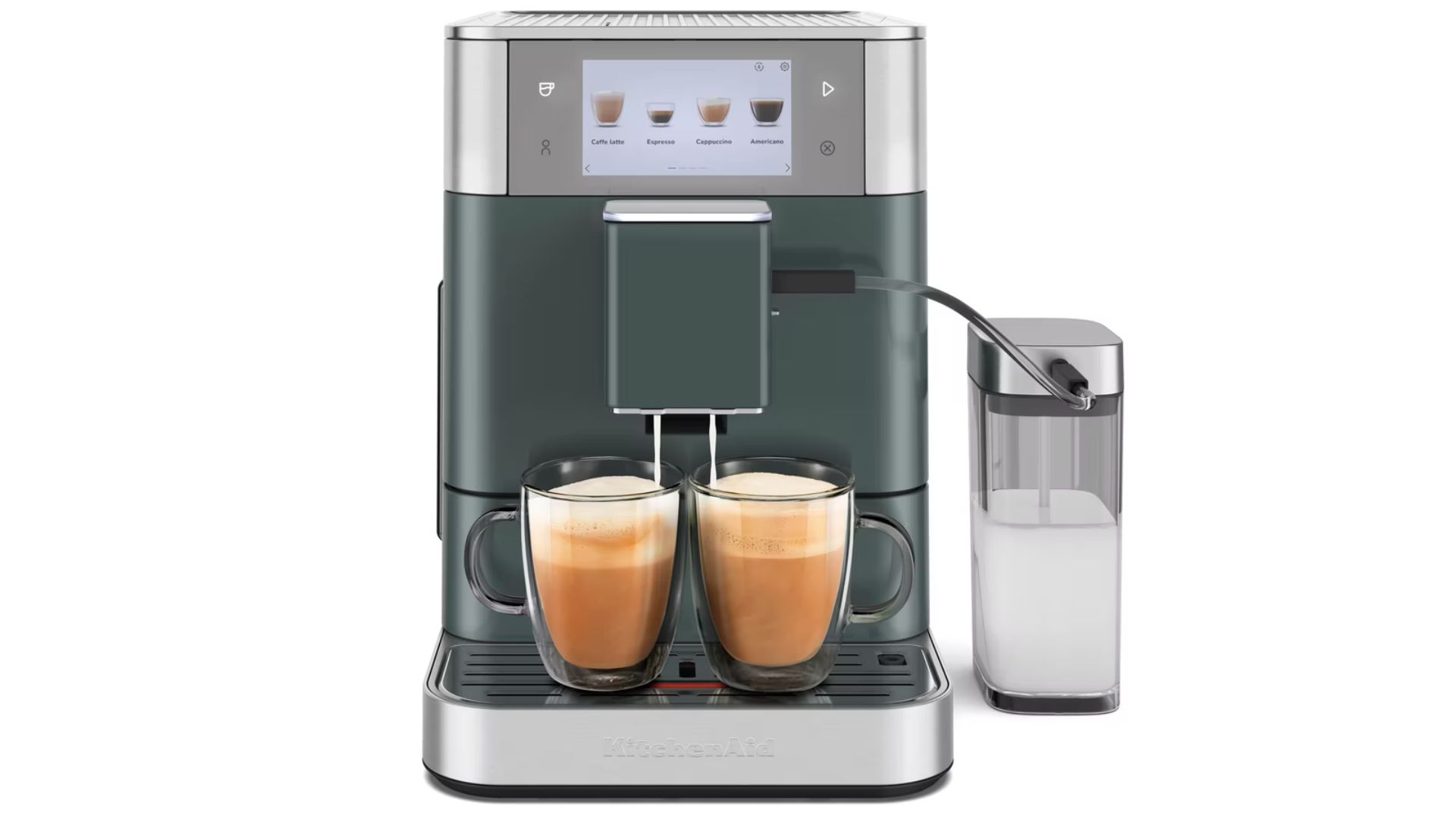
| Dimensions | 36.3(H) x 26(W) x 47.3(D)cm |
| Weight | 12 kgs |
| Water tank capacity | 2.2L |
| Coffee options | Over 40 |
| User profiles | 6 |
| Bean hopper capacity | 270g |
| Power | 1450 W |
| Bar pressure | 15 |
| Guarentee | 3 years |
Unboxing
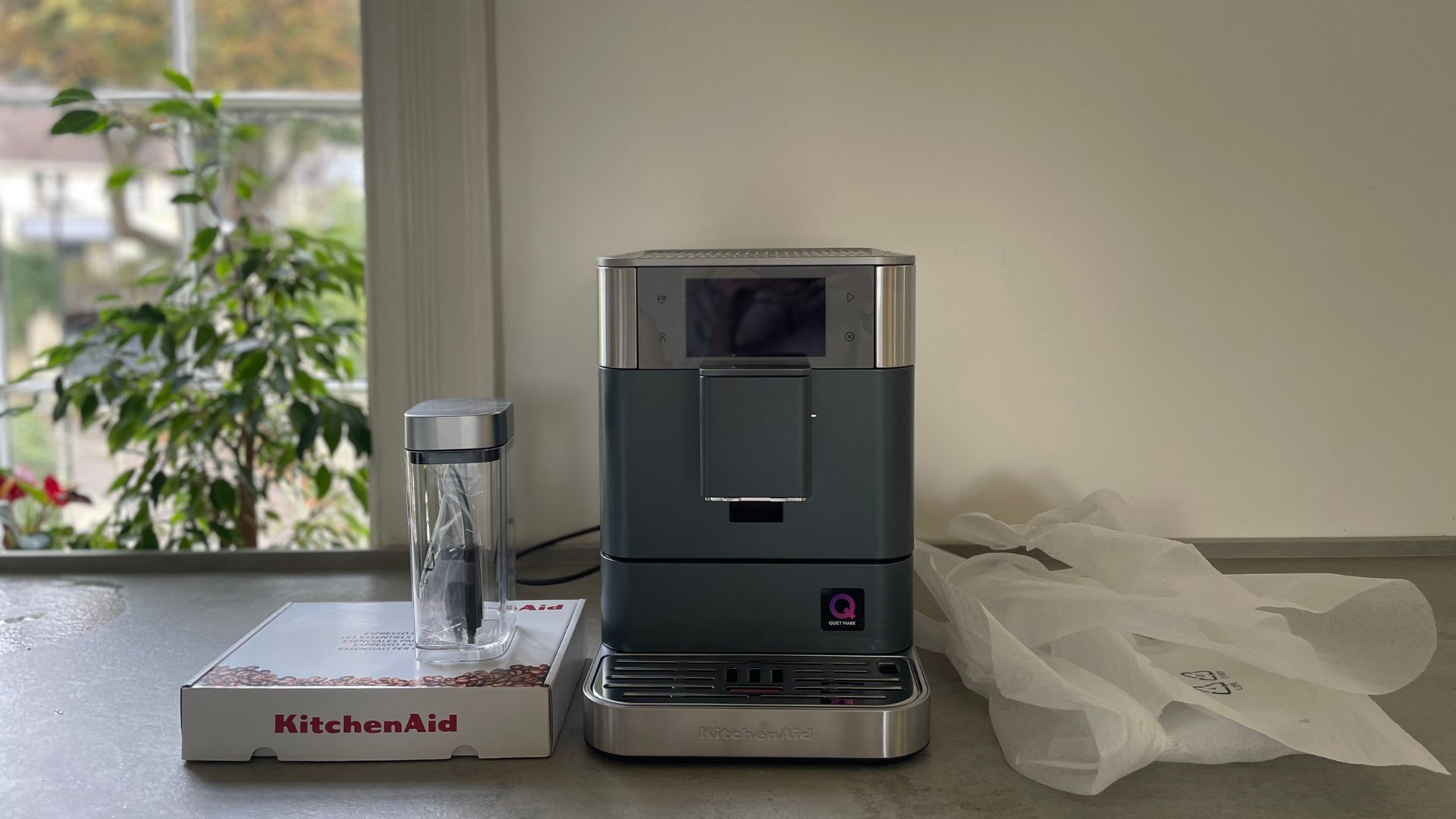
The KitchenAid is a pretty big machine and it comes with the box to match it. I actually ended up unboxing most of the coffee machine on the floor before lifting it onto the counter, because I knew I needed all my strength to move this around.
The packaging isn’t hugely sustainable — there’s a fair bit of polystyrene and plastic kicking around, so you’ll need some empty bins on delivery day, but it does the job of keeping the KitchenAid in pristine condition.
Alongside their super smart, slick machine, KitchenAid sends you a useful extra bundle, containing a water filter and coffee scoop. These are the kinds of things that will cost you (both in a very real sense and in a time and effort sense), so it’s nice to have them included with the machine.
Who would it suit?
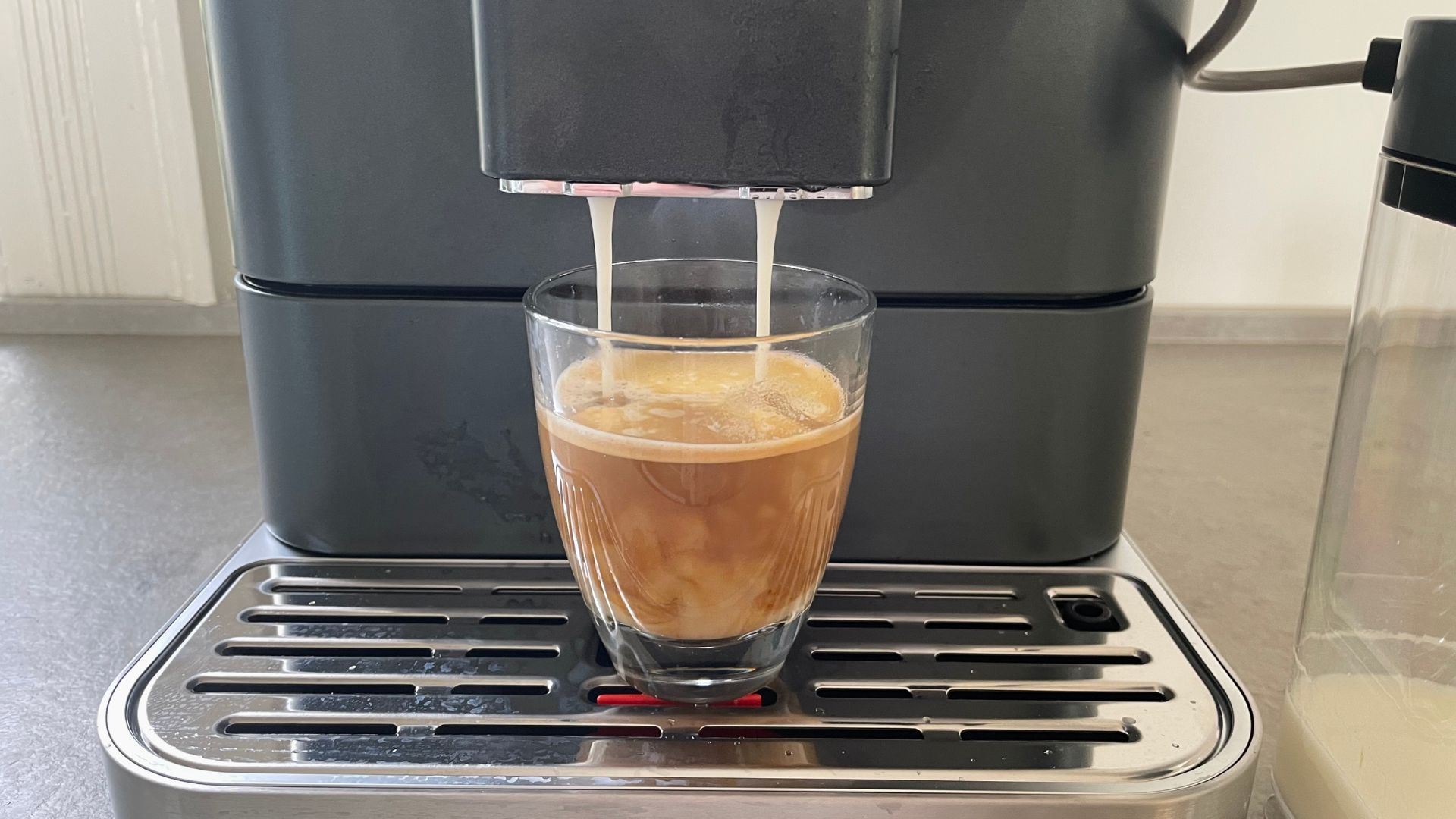
Machines like the KitchenAid offer the luxury experience. If you want an extensive menu of speciality coffee, this is the machine to reach for. You hardly have to lift a finger, the machine looks seriously impressive, and it makes delicious coffee. Of course, this comes with a hefty price tag, but for some people, this is where we treat ourselves.
When a machine automates everything, some baristas and picky coffee drinkers can get a little frustrated because it’s hard to get your almond milk latte with a two-thirds shot. Luckily, the easily customisable settings on the KitchenAid will let even the fussiest aficionados enjoy coffee just how they like it. You can choose your milk type, milk quantity, coffee quantity, brew style, body, temperature, and order of coffee, water, and milk brewing. And, the best part is, KitchenAid makes all of this a really simple, straightforward experience.
If you want to be able to brandish some barista skills or you just want a simple way to make basic coffees, there are much cheaper models on the market. I’ll go into details of what else is out there further down the page, but it’s worth noting that this is expensive, even for what it does.
What is it like to use?
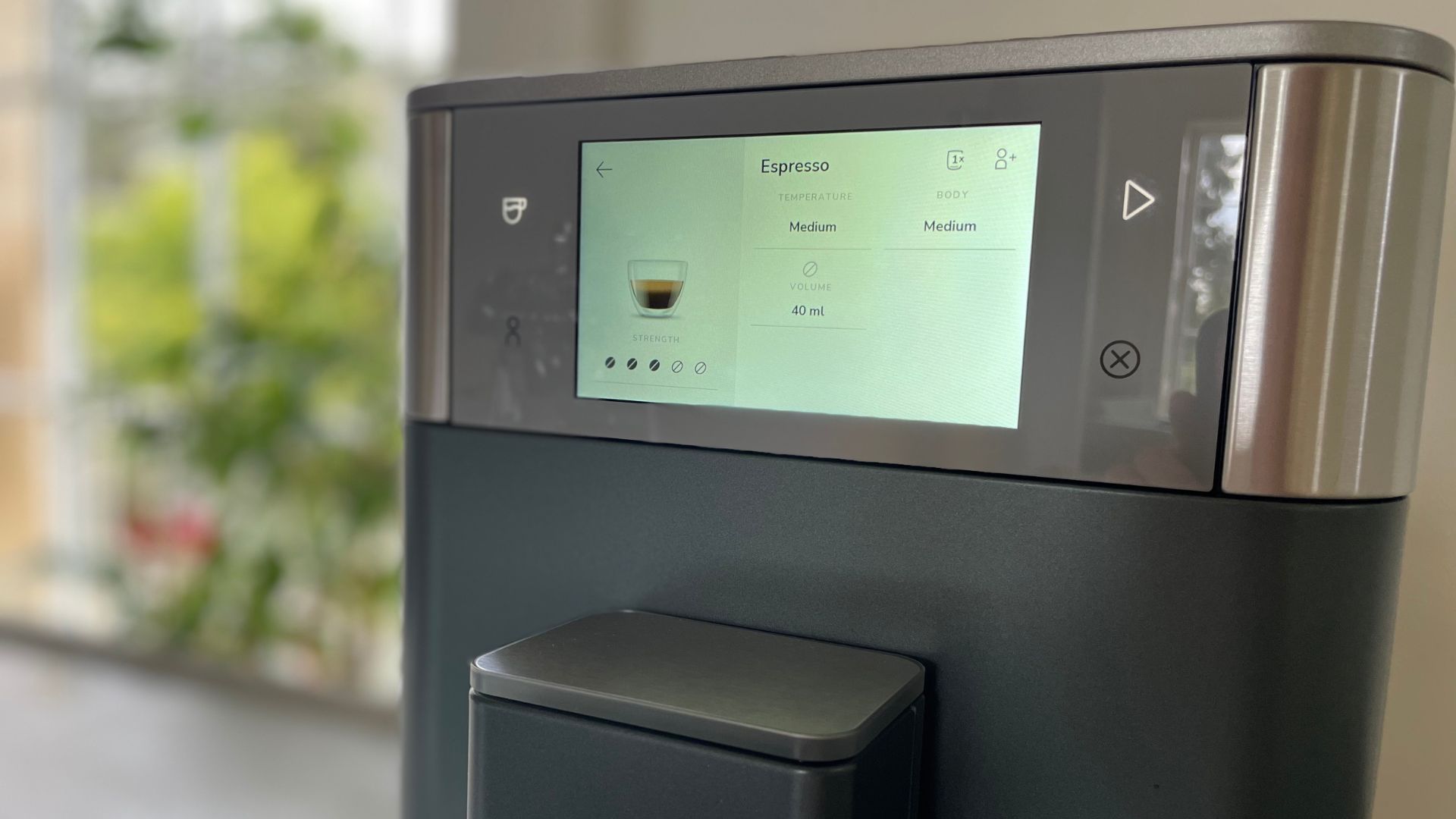
I’ve already alluded to the controls on the KitchenAid. They’re like using a touchscreen tablet — sensitive, simple, and easy to get familiar with quickly. When you turn on the machine for the first time, it’ll walk you through the whole set-up process. There won’t be a single moment where you question what you need to do or where you need to put something. Imagine a ‘coffee for dummies’ guide and this is it.
The KitchenAid offers a range of over 40 different coffees, from a simple espresso right through to more complex macchiatos and iced almond milk two-third shot lattes. I tested each one, multiple times, over the course of weeks to let you know what you can expect from KitchenAid.
Test 1: espresso
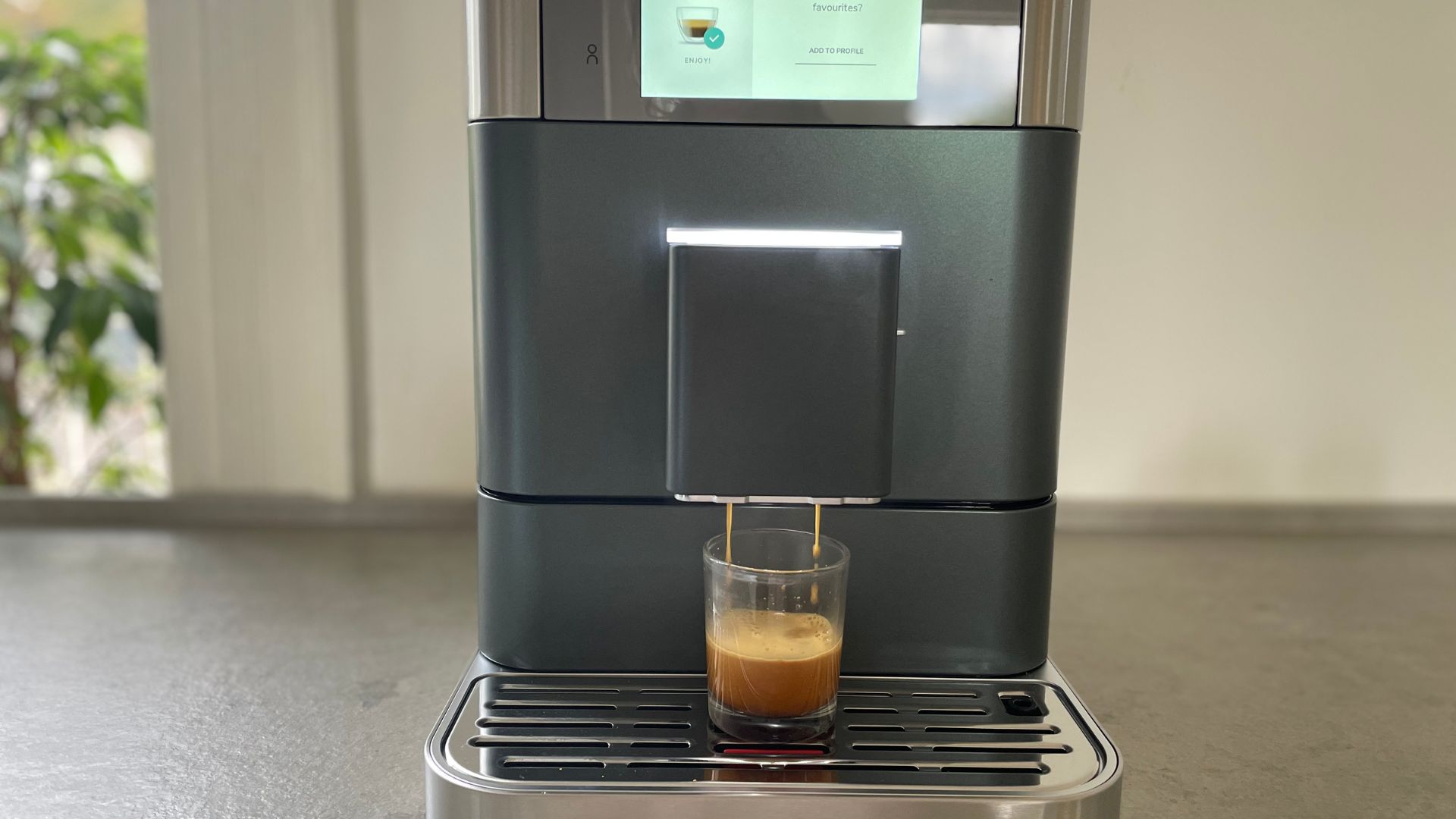
You won’t get far in the world of coffee without a machine that can make a good espresso, so I tested this in every kind of way that it could be brewed. I made single shots, double shots, half shots, cold shots, extra hot shots, and more. Whilst I chopped and changed with all the different variables, one thing remained consistent. The KitchenAid is incredibly consistent at extracting a well-balanced, bold espresso. Even when I have it some cheap, forgettable beans, it somehow whipped up an espresso that I would write home about.
If you’re a numbers person, the KitchenAid brews its average espresso in 19 seconds. On average, my espresso was 94 degrees, but you can hit 97 if you want to (don’t go any hotter) and 90 if you want a cooler drink.
All my espressos had a thick, dense crema on top, which is a brilliant indicator that all the delicious coffee oils had been extracted from my freshly ground coffee. You won’t get a chance to peek at the coffee grounds, since all the grinding, spinning, tamping, and brewing is done inside the machine. However, based on the clarity and flavours that come through, this is great at grinding coffee too.
Test 2: Americano
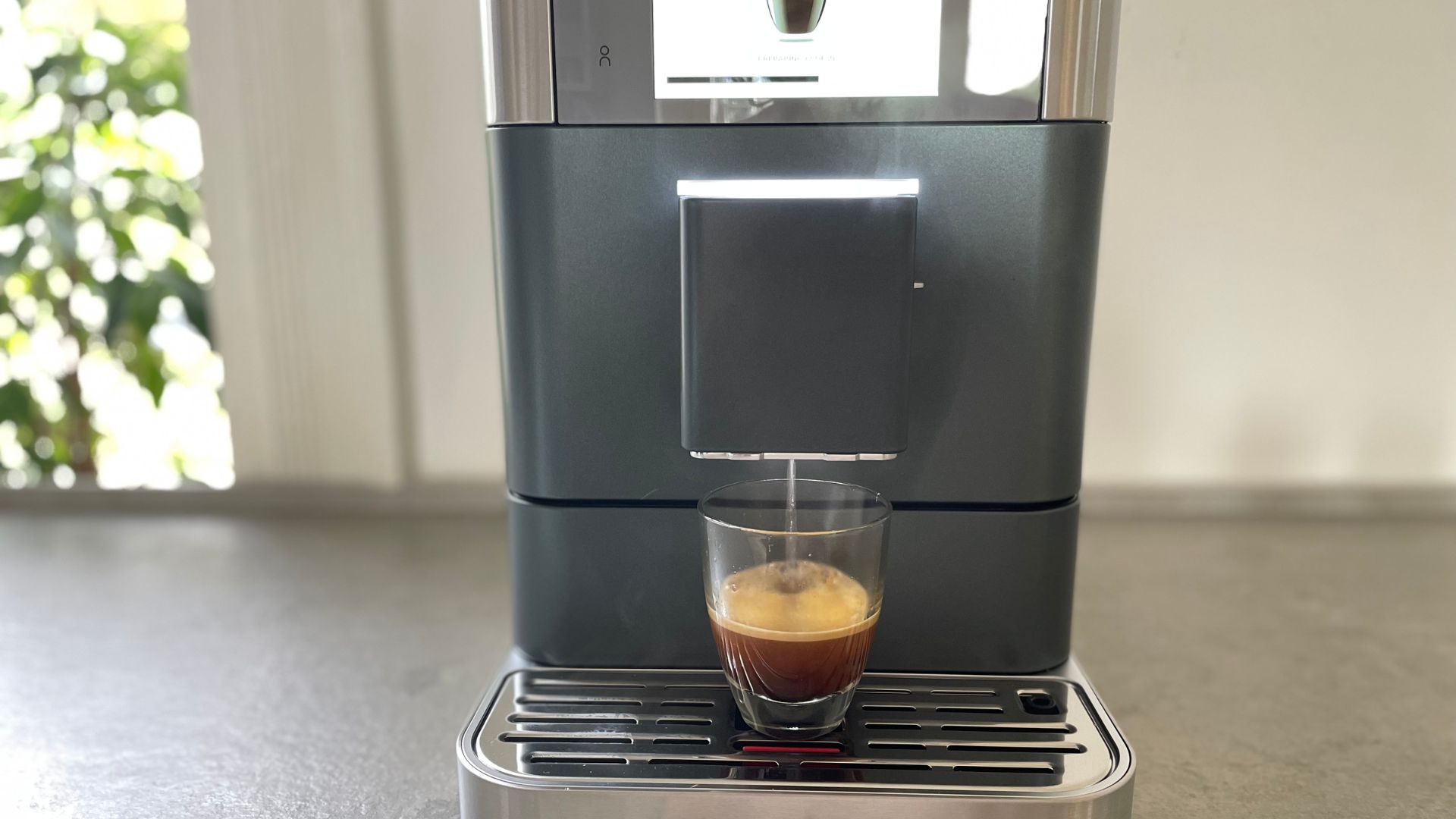
The way we drink black coffee comes under a lot of different names, Americano, long black, lungo. Call it what you want, but essentially, the only things that change are the order in which you add your espresso and hot water and the quantities that you use. The KitchenAid will give you pre-set names, so you can select the kind of coffee that you normally order from your barista, but it also gives you the chance to adjust the method, quantity, and temperature of your coffee manually. I normally don’t like having to get into these details, but KitchenAid makes it incredibly easy. I really believe anyone could use this machine.
I kept my first Americano simple. I used a single shot, 350ml of water, at ‘medium’ temperature. The KitchenAid brewed it in just over a minute, delivering coffee to the quality level that I would expect from my local barista. There was a light crema on top; I could get all the nutty, chocolatey notes from my dark roast; and it was just about drinkable (at 90 degrees, for my numbers people again) after it had been brewed. All in all, I would call that a great success. As I tweaked volumes and temperatures, I could feel how reactive this was to each adjustment. Any difference that I asked for played out perfectly. Even when I used my tallest coffee glass, my widest mug, and my most awkwardly shaped travel cup, the brew head slid up and down, preventing any splash or mess from happening unnecessarily. I wish I could fault it, but I guess you get what you pay for when you invest in a £2,000 machine.
Test 3: cappuccino
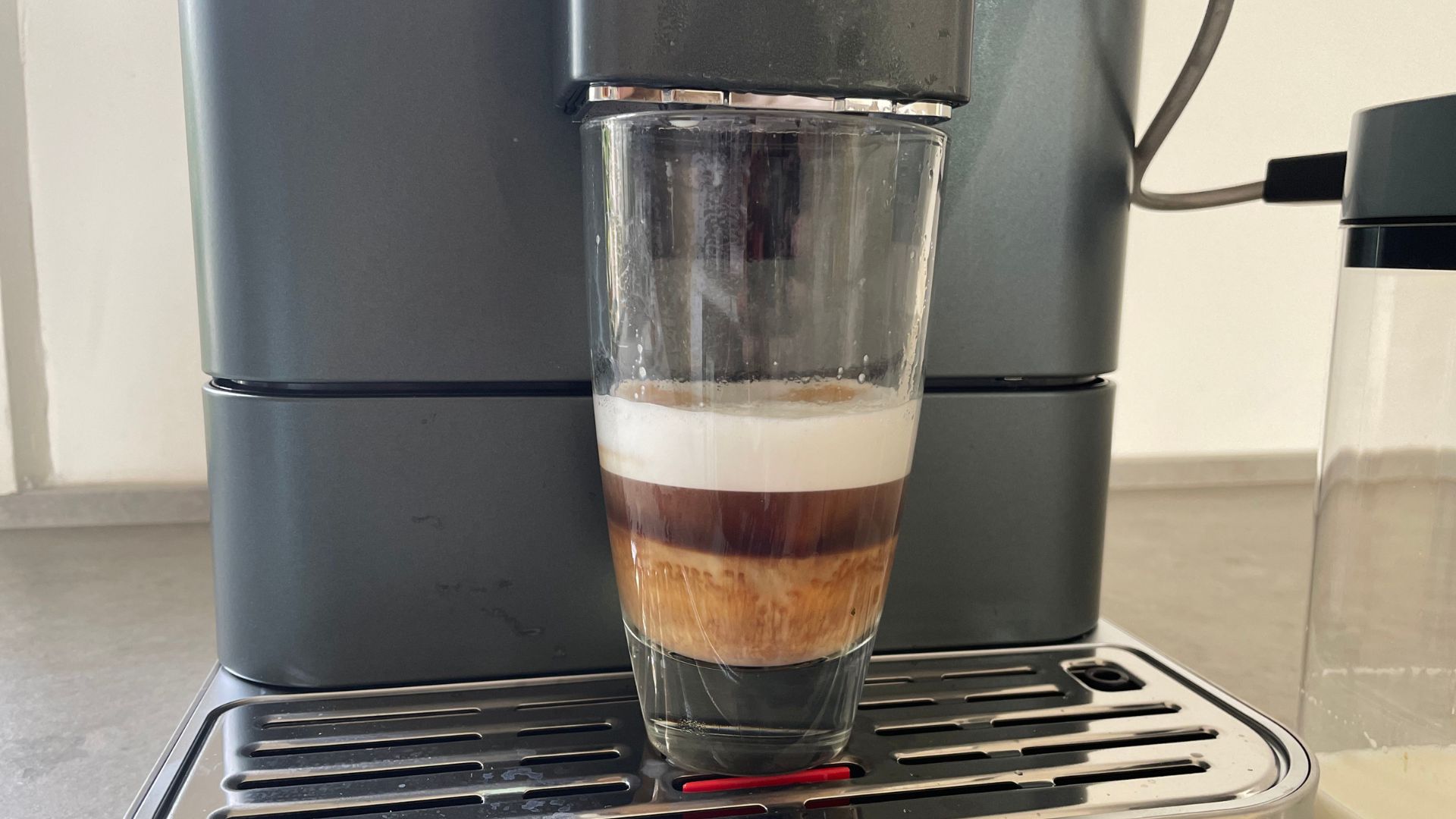
This is the cappuccino test, in other words, it’s the way I check the coffee machine can steam and texture milk. I make lattes, flat whites, macchiatos, iced lattes, and more milky drinks using dairy and non-dairy milk. There are a lot of different eventualities to cover here and I don’t want to leave a single drop of milk unfrothed.
I’ll start with the cappuccino because that’s the test that every coffee machine has to go through. I let the machine know that I was using dairy milk for this test, told it to make my coffee first, and attached the milk carafe. KitchenAid’s milk carafe is a little different to lots of others, in that it seemingly plugs into the brew head, rather than pouring directly into the coffee. I wasn't sure how this would bode for brewing, but it’s a real stroke of genius. The smooth, silky milk was poured into my cappuccino cup and then the machine cleaned the milk tube itself, automatically. My cappuccino had a great amount of structure: the thick microfoam felt almost like milk it was so smooth to drink and the temperature was perfect. The KitchenAid heated the milk so that it tasted sweet, taking the edge off any bitterness in my coffee. It was a great cappuccino.
After checking and cross-checking this, I played around with different milky coffees, pleased to find that each and every time this delivered the same impressive results. When I switched over to oat, almond, or soy milk, I just tapped on the screen to let the machine know, and it would adjust the steaming temperature and technique to deliver the same silky smooth milk, regardless of the challenge set. Vegans and lactose-intolerant coffee drinkers won’t have ever had such a treat from a coffee machine.
Cleaning
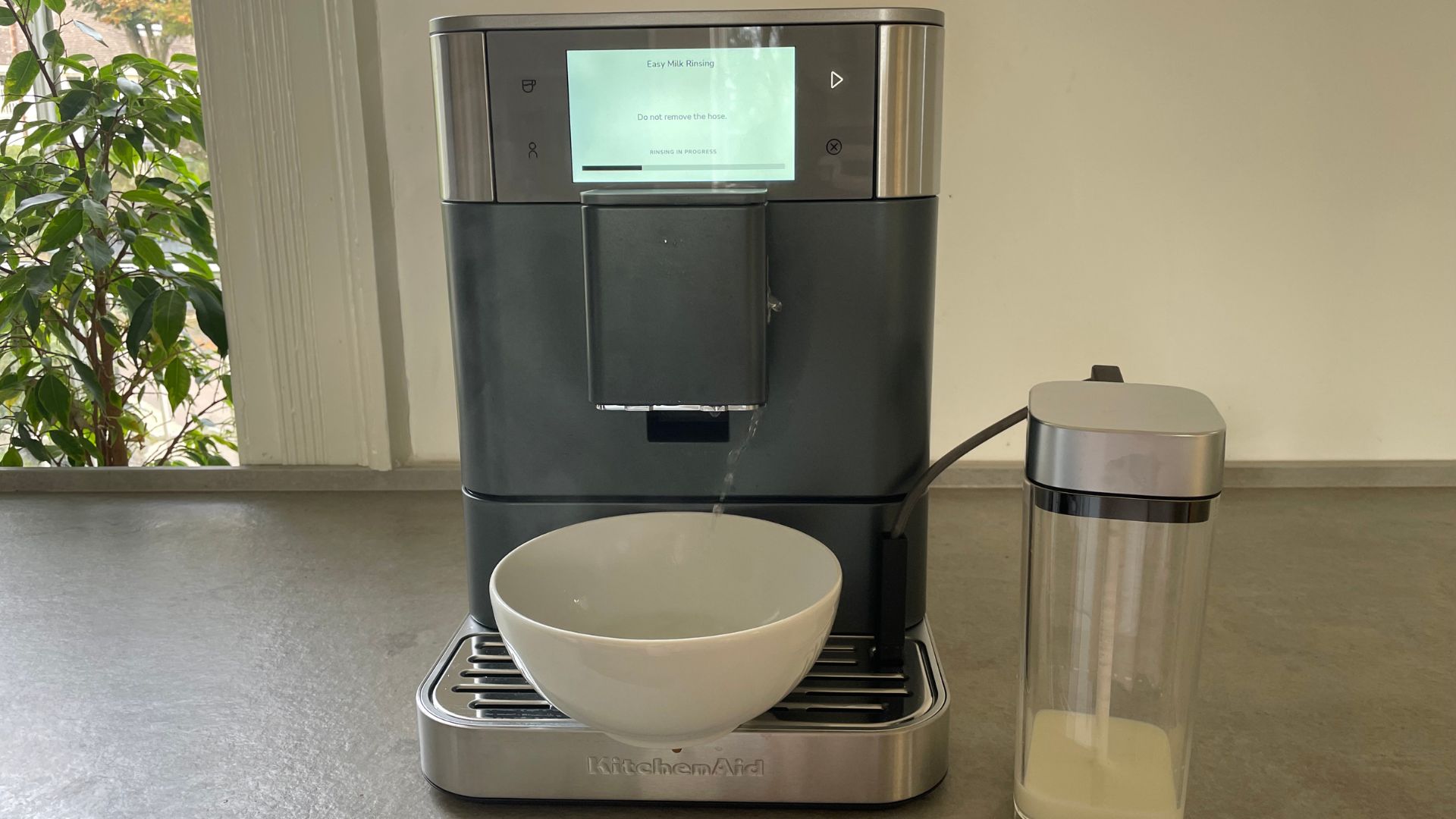
As you might expect from a machine like this, it’s hot on cleaning and maintenance. There’s actually a whole tab of cleaning options, from just cleaning the milk steamers to a more thorough rinse of the whole machine. I would recommend cleaning the whole milk system every time that you use it and, if you can, rinse the machine each time too. Worst case scenario, make the whole rinse a weekly job. When a machine is as expensive as this, it’s important to keep it spick and span.
Aesthetically, it might be a good idea to keep a microfibre cloth to hand for wiping down the screen, especially if your fingers get milky or grubby. However, for the most part, this stayed in good condition, even after making over 50 coffees in it.
If you want some extra help, we have a whole page dedicated to how to clean a coffee machine.
How does it compare?
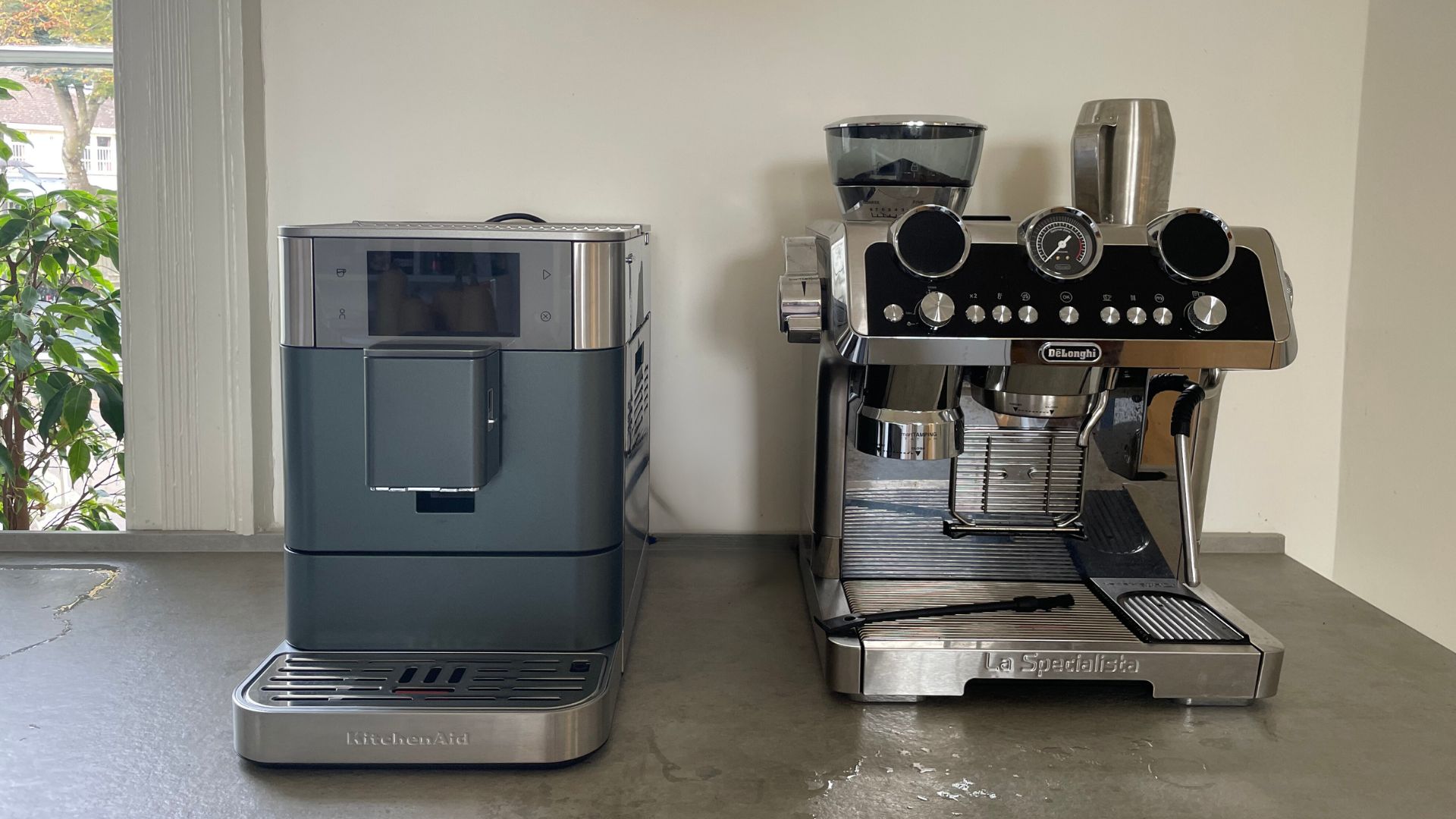
The world of automatic coffee machines is a vast one. If you want a luxury machine that works at the touch of a button, this is the one for you. Price aside, it’s one of my favourites. However, it is worth noting that there are cheaper options on the market.
The Philips 5400 Series, for example, can make 12 different coffees, steam non-dairy and dairy milks, and customise your coffee. Of course, it’s not as technical as the KitchenAid and you won’t get the same scrutiny over each aspect of your coffee, but I really don’t think the average coffee maker needs it. You could bag the spare £1,500 and buy some expensive coffee beans (of jewellery) — and I’ll take a cut too, if you want.
Alternatively, if you’re open to an expensive coffee machine, but you want to get more involved in the brewing process, the Sage Oracle Jet is one to watch. This adds one level of involvement — not that you really have to do much — because you have to move the portafilter from grinding to brewing, locking it into place and pressing a few more buttons. You’ll get to tell it about different milks, shot sizes, and temperatures, so you’ll get to enjoy the luxury experience that the KitchenAid offers, just from a more techy perspective.
Should you buy it?
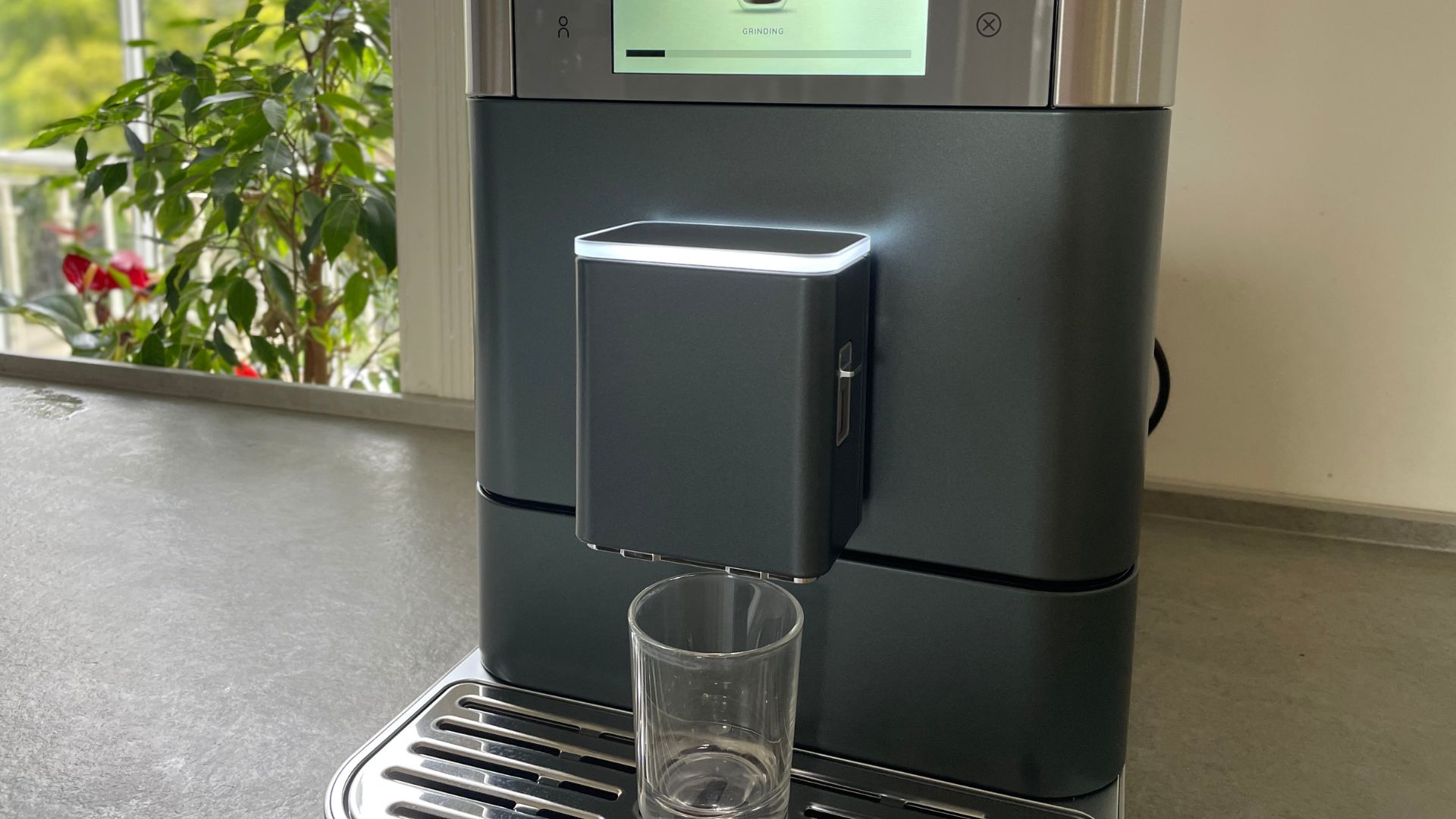
If money is no object and you want an easy machine that makes coffee as well as a barista, this is an investment you won’t regret. If, however, money does play a role in your decision making, there are other automatic coffee machines, such as the Philips that come a lot cheaper with just a few compromises.
How we test
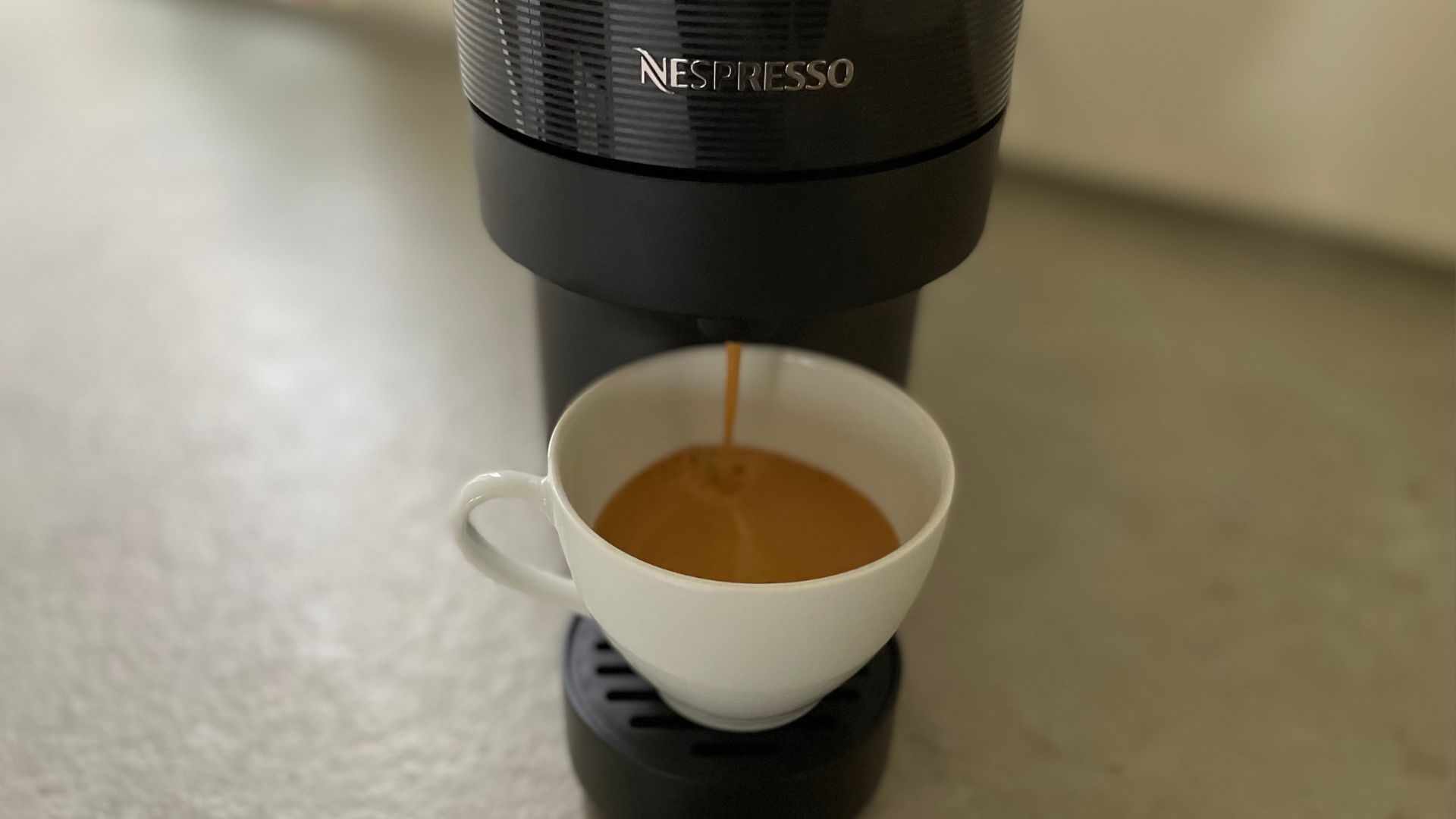
At woman&home, our coffee maker tests take things to the next level. Before becoming a journalist, I was a barista, so to say that I’m a coffee snob or a bit obsessed with coffee is the understatement of the century.
Armed with my barista skills, I test all the coffee machines from woman&home. Each model has to make over fifty coffees, and I drill into the details of each one. I always make sure to give you extra details on how it makes an espresso, an Americano, and a cappuccino, because that covers most of the basic skills that will get you a good cup of coffee. An espresso brings all the flavours; Americanos test how the machine handles hot water; and cappuccinos measure the way that the machine steams milks, both dairy and non-dairy.
I’ll also look at other factors, such as the cleaning, maintenance, and aesthetic appeal of the coffee machine, so that you get the full picture of what any coffee machine that I review is like to use. Now, because I’ve tested over 200 coffee machines, I very naturally end up comparing models to each other. This can be really helpful for you, especially if you’re thinking about the value of the coffee machine and wondering what else is out there. I try to pick a couple so that you get a well-rounded idea of where the coffee machine sits on the market.
After all that, I’ll come to a judgement on who I think the coffee machine suits. All of our reviews are independent, which means that you’ll only ever get my honest opinion of what one is like to use. I can’t be bought, even with some really tasty coffee beans.
Sign up for the woman&home newsletter
Sign up to our free daily email for the latest royal and entertainment news, interesting opinion, expert advice on styling and beauty trends, and no-nonsense guides to the health and wellness questions you want answered.

Laura is woman&home's eCommerce editor, in charge of testing, reviewing and creating buying guides for the Homes section, so you'll usually see her testing everything from the best dehumidifiers to sizing up the latest Le Cruset pot. Previously, she was eCommerce editor at Homes & Gardens magazine, where she specialised in covering coffee and product content, looking for pieces tailored for timelessness. The secret to her heart is both simplicity and quality. She is also a qualified Master Perfumer and holds an English degree from Oxford University. Her first editorial job was as Fashion writer for The White Company.
-
 Jennifer Aniston's white sneakers, turned-up jeans and smart blazer are closet must-haves
Jennifer Aniston's white sneakers, turned-up jeans and smart blazer are closet must-havesJennifer Aniston never fails to style jeans perfectly - and we love this blend of casual trainers and a chic blazer
By Caitlin Elliott Published
-
 Joanna Page dazzles at the BAFTA TV Awards 2025 in this occasionwear-ready dress and it's still in stock
Joanna Page dazzles at the BAFTA TV Awards 2025 in this occasionwear-ready dress and it's still in stockJoanna Page nails summer occasionwear on the TV BAFTAs 2025 red carpet in one of this season's most on-trend colours
By Rivkie Baum Published
-
 Kate Moss' signature perfume is one she 'wouldn’t leave the house without' - and it's on sale today
Kate Moss' signature perfume is one she 'wouldn’t leave the house without' - and it's on sale todayKate Moss' perfumes of choice are a celebration of florals and sharp, invigorating citrus notes - ideal for summer spritzing...
By Naomi Jamieson Published